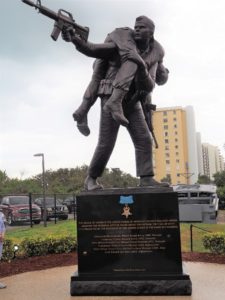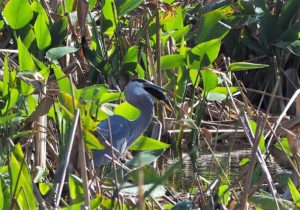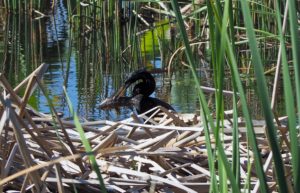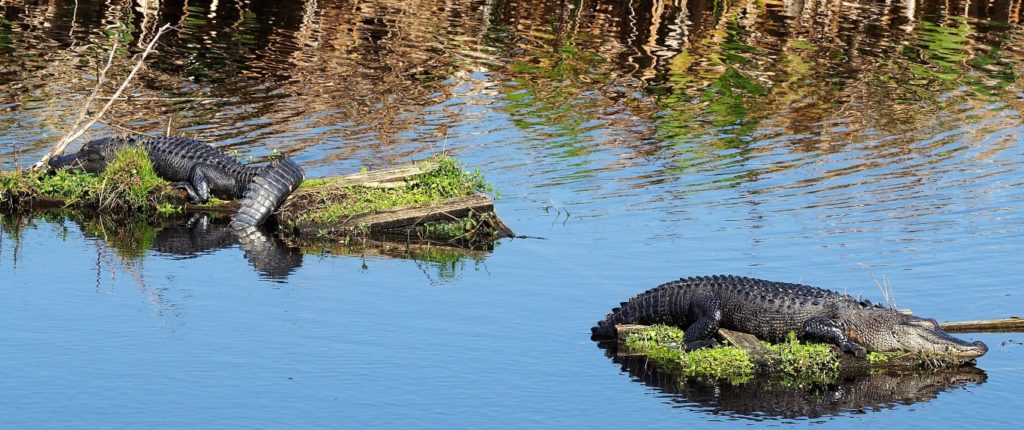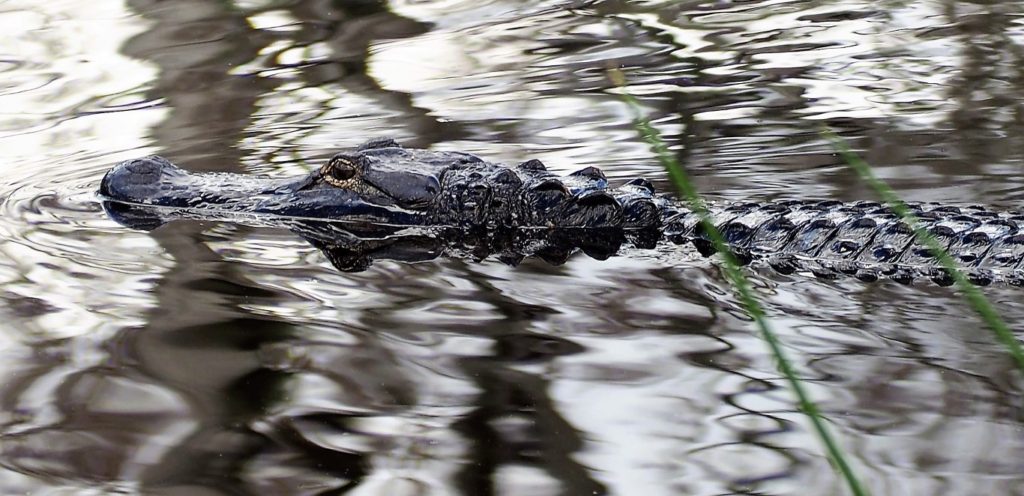In telling folks about our plans to conclude this year’s Florida trip at Lake Okeechobee, people kept saying things like, “I hope you like alligators…,” or “you’ll have some interesting experiences, that is, if you think snakes and alligators can be interesting…,” or, my favorite, “Lake Okeechobee is a great place to go fishing, well, except you really shouldn’t go near the water because it’s basically loaded up with alligators and besides that my dad was fishing there and found himself wading in a sea of water moccasins…” Oh good grief. The litany of dreadful, foreboding encounters was so extensive and constant, we seriously considered just canceling that portion of trip and going home.
It was fine. In fact, it was better than fine. It was wonderful.
And, once again, inspiring. Our first day at Lake Okeechobee was forecasted to be coolish and raining, so he drove over to Fort Pierce to see the Navy SEAL Museum.
A statue commemorating the rescue of Lieutenant Tommy Norris by Petty Officer Mike Norton. During a mission in Viet Nam, Norris was so severely wounded that he was presumed dead. Nevertheless, Norton braved a hailstorm of bullets, rescued Norris, and then, although badly wounded himself, put his own life jacket on Norris to swim Norris out to another SEAL vessel, acts of heroism and bravery so compelling that Norton received the Medal of Honor. Incredibly, though, after LT Norris recovered from his near-fatal wounds, he returned to duty and himself engaged in acts of heroism so compelling that HE won the Medal of Honor. Wendy and I are standing there, reading all this with tears in our eyes, and we’re not through the front door yet.
Inside, the museum was everything you’d expect. One inspiring display after another explaining the whole SEAL concept, from intensive BUDS training in San Diego (where two-thirds of the volunteers can’t take it and drop out), to specialization in various aspects of modern warfare, to samples of the equipment used, to the operations of SEAL teams. As you would expect, some of the most famous SEAL missions are illustrated, including the rescue of Captain Phillips from Somali pirates to, of course, the granddaddy of them all, the raid on the compound in Abbottabad and the elimination of Osama bin Laden.
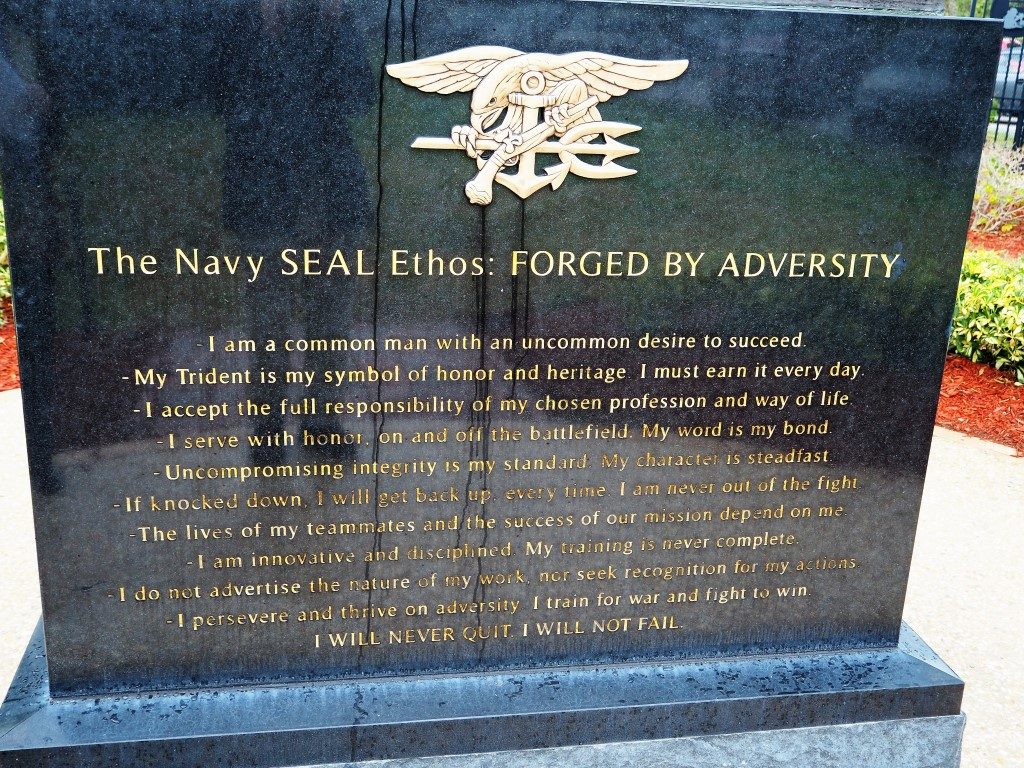
The code of conduct for Navy SEALs, very similar to the Army’s Soldier’s Creed, or the Ranger Creed, although one should note one particular element: “I do not advertise the nature of my work, nor seek recognition for my actions.” It is this principle that led to the condemnation and shunning of the SEAL (whose name I refuse to utter) who violated his oath and published “No Easy Day,” the account of the raid on Abbottabad. I know most people don’t understand why describing the mission was such an act of betrayal, but personally I give thanks that he was ordered to return all of the royalties he earned.
Nearby the campground we found another interesting attraction. As we learned last year, one problem faced by the Everglades is nutrient-rich runoff from farms, which leads to overly dense plant growth that actually chokes the wetlands. To counter that problem, local governments have built a number of treatment impoundments upstream of the Everglades to remove nutrients, and one such facility is located just a few miles north of the campground. That facility diverts about ten percent of the flow of Taylor Creek, retains that flow in a series of basins where overly rich plant growth is acceptable and intended, and then returns the water, now reduced in nutrient levels, back to the creek. These basins are, as one would expect, wildly rich in plant and animal life, and the county has actually built paths around the basins where one can stroll and enjoy the rich diversity of life that flourishes there.
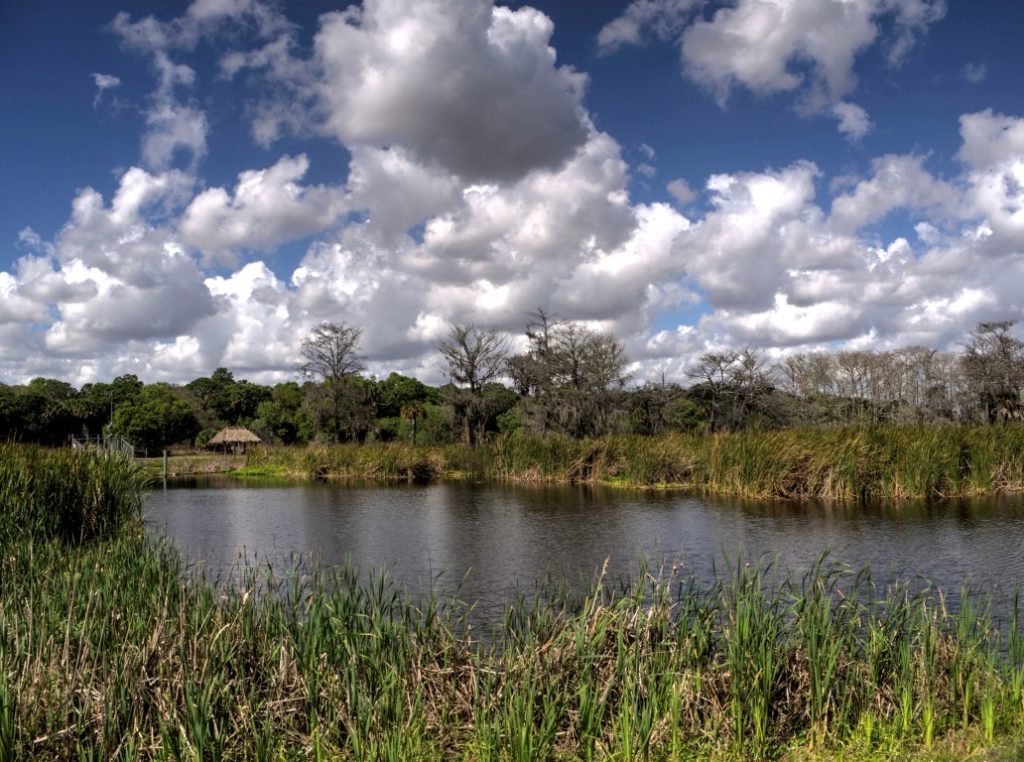
One of the treatment ponds for Taylor Creek. It is remarkable that the county would take something as mundane as a treatment system and make it inviting and user-friendly, such as the thatch-covered gazebo where people can pause while walking around the area.
We saw birds of all stripes (herons, anhingas, egrets, ibises, ducks, cranes, songbirds), turtles, butterflies, and even an otter. (No snakes.) (At least none that I pointed out to Wendy.) (That was a joke.) It was particularly fun to watch the birds catching and eating fish, even if the fish did seem too large to ease down the gullet.
And yes, we did see alligators. Dozens of them. Mostly basking in the ponds, although a couple were sunning themselves along the path, something that Wendy found particularly disconcerting.
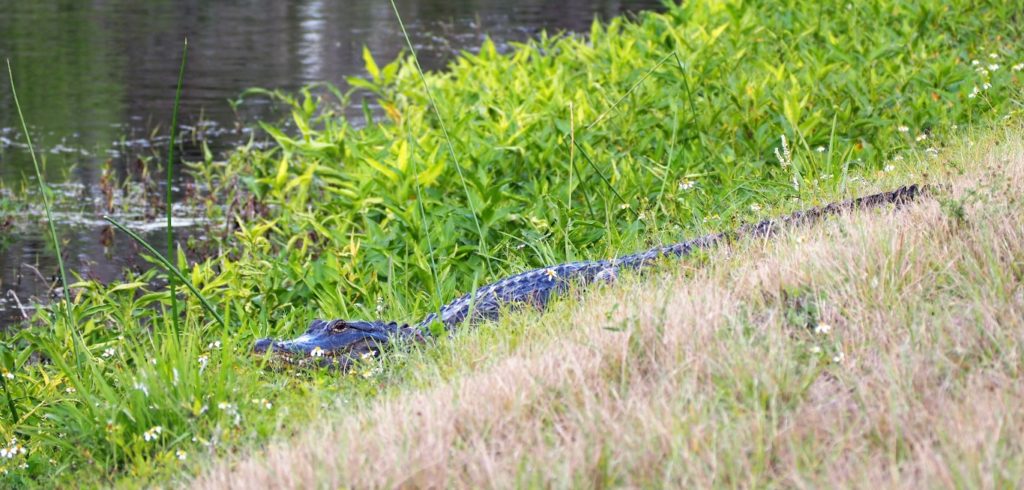
This six-footer slowly moved away from the path as I approached, although it was hard not to keep in mind dozens of youtube videos showing alligators spinning suddenly and charging hapless onlookers. As I was approaching to take advantage of this photo op, I just kept reminding myself that there are things in life worse than getting bitten by an alligator, although I must admit none actually come to mind.
One last thought. We found ourselves parked next to a couple from Pennsylvania, Herb and Mary Ellen Truhe. It turns out he is a retired policeman (27 years on the force) who comes from a family of wide-ranging police experience. And we found him to be one of the most friendly, knowledgeable, and decent human beings it’s ever been my pleasure to meet. Just one example to illustrate the point. He once had to arrest a drug addict on a parole violation warrant. As he picked up the guy, he noted that the addict looked pretty bad, obviously strung out. “When did you last eat?” he asked. “Three days ago,” the addict responded. So, incredibly, Herb brought him home, sat him down with his family, and gave him a decent meal, before carting him off to jail. “The only thing I ask,” Herb said to the addict, “is that you treat my family with the same respect I’m showing to you.” As it turns out, while they were having supper, the addict engaged with Herb’s teenage daughter, telling her at one point, “You need to stay away from drugs, or you’ll end up like me.” I don’t know how all that ended up, but it’s easy to imagine a story of redemption from a simple act of grace and a home-cooked meal. So there we have it: more inspiration from something as common as a neighbor at a campground.
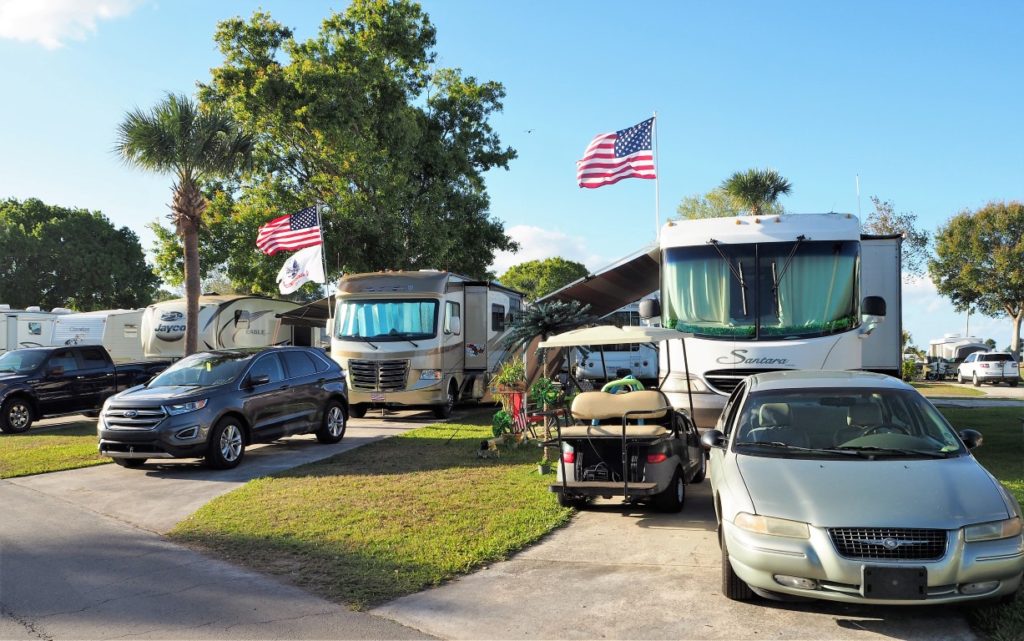
Parked next to the Herb and Mary Ellen Truhe. The campground was very nice and, contrary to our fears before arriving, completely free from dachshund-eating alligators and snakes.
We’re not sure about a Florida trip next year. We’ve basically explored the state to our satisfaction, noting the areas we like (as well as those we’re not so fond of). We may return next year to a couple favorite places, or we may start exploring the options for other warmer climes. Either way, though, this was definitely one of the better Florida trips.

